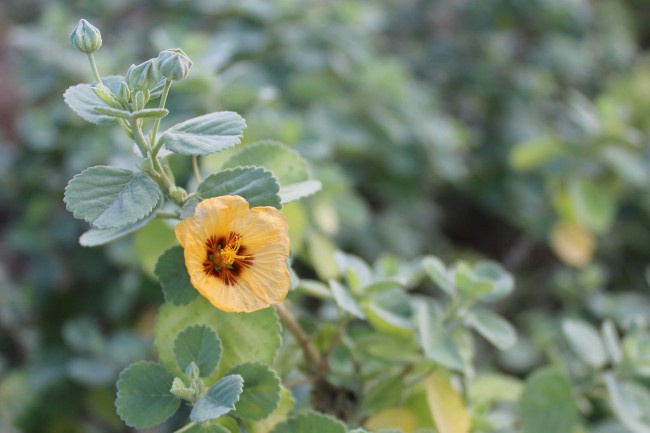Local Flora: Exploring Hawaiʻi through Nature

Hawaiian culture has based itself off of the surrounding nature – integrating it into its food, crafts, and even religion. Prior to western colonization, kānaka maoli (native Hawaiians) thrived off the ʻāina for generations, constantly maintaining a colorful and healthy environment. One of the largest aspects of such are the extensive native plants in Hawaii variety, having produced approximately 14,000 species native to Hawaiʻi.
ʻŌhiʻa Lehua

This evergreen serves as Hawaiʻi’s state tree. It has year-round blooms that have a bristle-like appearance and come in an array of colors. The most popular variation has bright red blossoms. In traditional moʻolelo, the creation story of the tree begins with one of Pele’s love interests, ʻŌhiʻa. Pele fell for ʻŌhiʻa, but he was already in love with another woman named Lehua. Out of anger, Pele turned ʻŌhiʻa into a tree. Grief-stricken, Lehua had other Hawaiian gods turn her into a blossom for the tree so that her and ʻŌhiʻa could remain together forever.
Kalo

Kalo, also known as taro, is a root plant used in a variety of dishes and drinks. This has been one of Hawaiʻi’s oldest cultivated crops, as kānaka maoli had many loʻi (kalo patches) across the islands that sustained the civilization for generations. Moʻolelo tells us that kalo is a result of Wākea and Ho‘ohōkūkalani’s stillborn childʻs burial. Its body formed into a kalo plant, creating an everlasting relationship with the land. Now, kalo farming is a sacred practice, for kānaka maoli will take care of kalo as long as it continues to care of them.
Palapalai

Palapalai is a species of fern indigenous to Hawaiʻi. Although this plant is indigenous, many other types of fern are propagated elsewhere, later being shipped to Hawaiʻi and sold as “palapalai.” You can identify palapalai by recognizing its medium to light green leaves that grow approximately 0.9 inches or more. Palapalai are sacred to the goddess of hula, Laka. Kānaka maoli often use palapalai to decorate hula dancers and make leis.
Pua ʻIlima

Each of the eight islands has its own official flower, and Oʻahu’s is the pua ʻilima. This flower is a member of the Hibiscus family and its colors can range from light yellow to rich orange. Its papery-thin nature has made it a coveted lei component. Lei makers often stack pua ʻilimas on top of each other, creating a thick chain of velvety petals; some can have up to thousands of ʻilimas in a single strand. Due to its tedious crafting process, pua ʻilima leis were often worn by high-ranking officials and aliʻi; however, commoners also decorated themselves with ʻilima leis.
Hawaiʻi has one of the most vibrant variations of plants on the Earth. Nevertheless, is important to respect the land. Mālama ʻāina, meaning to take care of the land, is constantly expressed through Hawaiian and local practices. A crucial part of exploring Hawaiʻi is applying the concept of mālama ʻāina. Leave flora and fauna alone, and never stray from designated paths. Hawaiʻi is delicate and beautiful, and it is humanity’s job to keep it this way.































You must be logged in to post a comment Login